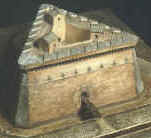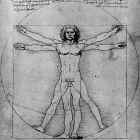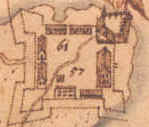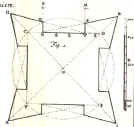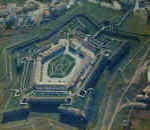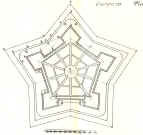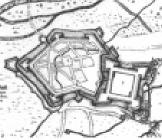|
1. Renaissance fortifications |
||
|
|
||
|
|
|
The invention of powerful powder-fired cannons in the 15th century led to a new concept of military defense, first implemented by Italian humanists. For example, Leon Battista Alberti wrote in De re aedificatoria (wrote in the 1440's, but published in 1485): "A start-shaped configuration might be the best". Also Leonardo da Vinci from 1485 to 1490 produced studies on war, flying and work machines, water and land devices as well as architecture (including churches and fortresses). In 1502 Leonardo entered the service of Cesare Borgia (duke of Romagna and chief general of Pope Alexander VI). As the duke's chief architect and engineer, Leonardo supervised work on the fortresses of the papal territories in central Italy. An example o triangular fortress in the Far East in the fort-bastion San Pedro in Cebu (Philippines), made in 1565, by Legazpi. |
|
Santísima Trinidad (Taiwan) |
Soon after, the Italian methods were spread all over Europe. For example, Italian architect Alessandro Pasqualini, was requested to go to Germany to start the construction of the Citadel of Jülich, in 1548. Many treatises on military architecture were written, one of them written by Fernández de Medrano. There he states: "All parts in a fortress must be done according to some proportions ... Because a fortress can be compared to the human body, in which if only a small part is sick the whole body will suffer". This square system also reached America and the Far East through the Portuguese, Spanish and Dutch imperial routes along the 16th and 17th centuries. |
|
|
¡@ ¡@
|
¡@ ¡@
|
The pentagonal shape can be observed in places like the Castle of Saint Angelo (Rome). At the end of the 16th Century it was also utilized by Philip II in the citadels of Jaca and Pamplona which are still preserved. Fernández also said that "The pentagon is the figure more suitable to make the citadel of a village, but is also good for a countryside fort, or for defending a circumvallation line". This shape was very common in the 16th century in the Low Lands, and we can also find one in Kostrzyn (Poland), and even in the 18th century in the city-port El Callao (Peru). |
|
¡@ ¡@
|
¡@ ¡@ ¡@ A city and her citadel |
For
Fernández a citadel was: "A fortress of four, five or more
bastions, which is placed attached to a city; so, both names keep the same
relation as the one of the two areas". According to this definition, we can considered
as a citadels not only the classical examples of Jaca of Jülich, but
even structures like the one in Tayouan (Taiwan).
|
|
Sebastián Fernández de
Medrano, El Architecto perfecto en el Arte
Militar, Brussels, 1700 |
||
